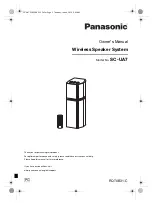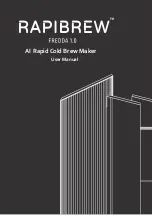
11
Pre-Startup Instructions - General
CAUTION
To prevent property damage or personal injury,
do not start the unit until all necessary pre-
checks and tests have been performed.
Prior to the beginning of Startup, Adjustments, and Checks
procedures, the following steps should be completed in the
building.
WARNING
MOVING MACHINERY HAZARD!
To prevent possible personal injury or death,
disconnect power to the unit and padlock in the
“OFF” position before servicing fans.
On new installations, or if a major component has been
replaced, the operation of the unit must be checked.
Check unit operation as outlined in the following
instructions. If any sparking, odors, or unusual sounds
are encountered, shut off electrical power and recheck for
wiring errors, or obstructions in or near the blower motors.
Duct covers must be removed before operating unit.
The Startup, Adjustments, and Checks procedure provides
a step-by-step sequence which, if followed, will assure the
proper startup of the equipment in the minimum amount of
time. Air balancing of duct system is not considered part
of this procedure. However, it is an important phase of any
air conditioning system startup and should be performed
upon completion of the Startup, Adjustments, and Checks
procedure. The Startup, Adjustments, and Checks
procedure at outside ambients below 55°F should be
limited to a readiness check of the refrigeration system with
the required final check and calibration left to be completed
when the outside ambient rises above 55°F.
Temporary Heating Or Cooling
If the unit is to be used for temporary heating or cooling,
a “Startup, Adjustments, and Checks" must first be
performed in accordance with this manual. Damage or
repairs due to failure to comply with these requirements
are not covered under the warranty.
After
the machines
are used for temporary heating or cooling, inspect the coils,
fans, and motors for unacceptable levels of construction
dust and dirt and install new filters.
Contractor Responsibility
The installing contractor must be certain that:
• All supply and return air ductwork is in place, properly
sealed, and corresponds with installation instructions.
• All thermostats are mounted and wired in accordance
with installation instructions.
• All electric power, all gas, hot water or steam line
connections, and the condensate drain installation
have been made to each unit on the job. These
main supply lines must be functional and capable of
operating all units simultaneously.
•
Air filters are in place.
Roof Curb Installation Check
Inspect the roof curb for correct installation. The unit and
curb assembly should be level. Inspect the flashing of the
roof mounting curb to the roof, especially at the corners, for
good workmanship. Also check for leaks around gaskets.
Note any deficiencies in a separate report and forward to
the contractor.
Obstructions, Fan Clearance and Wiring
Remove any extraneous construction and shipping
materials that may be found during this procedure. Rotate
all fans manually to check for proper clearances and that
they rotate freely. Check for bolts and screws that may
have jarred loose during shipment to the job site. Re-
tighten if necessary. Re-tighten all electrical connections.
Field Duct Connections
Verify that all duct connections are tight and that there is no
air bypass between supply and return.
Filter Section Check
Remove filter section access panels and check that filters
are properly installed. Note airflow arrows on filter frames.
Pre-startup Precautions
It is important for your safety that the unit has been
properly grounded during installation. Check ground lug
connection in main control box for tightness prior to closing
circuit breaker or disconnect switch. Verify that supply
voltage on line side of disconnect agrees with voltage on
unit identification plate and is within the utilization voltage
range as indicated in Appendix B Electrical Data.
System Voltage -
The nominal voltage value assigned to a
circuit or system for the purpose of designating its voltage
class.
Nameplate Voltage -
The voltage assigned to a piece of
equipment for the purpose of designating its voltage class
and for the purpose of defining the minimum and maximum
voltage at which the equipment will operate.
Utilization Voltage -
The voltage of the line terminals
of the equipment at which the equipment must give fully
satisfactory performance. Once it is established that supply
voltage will be maintained within the utilization range under
all system conditions, check and calculate if an unbalanced
condition exists between phases. Calculate percent voltage
unbalance as follows.
Summary of Contents for DBC Series
Page 44: ...44...
Page 45: ...45...
Page 46: ...46 THIS PAGE IS INTENTIONALLY LEFT BLANK...











































